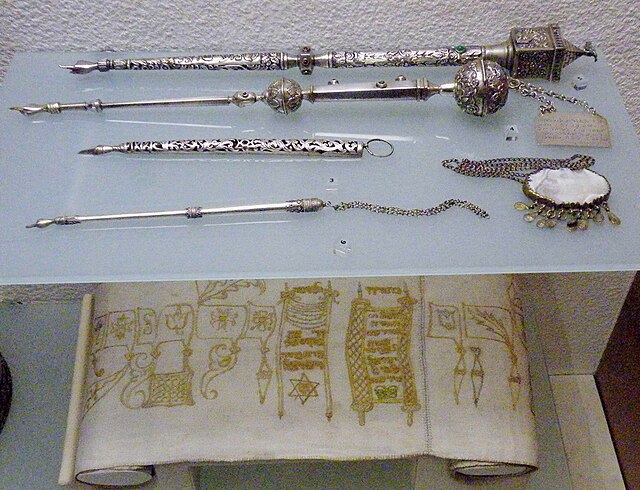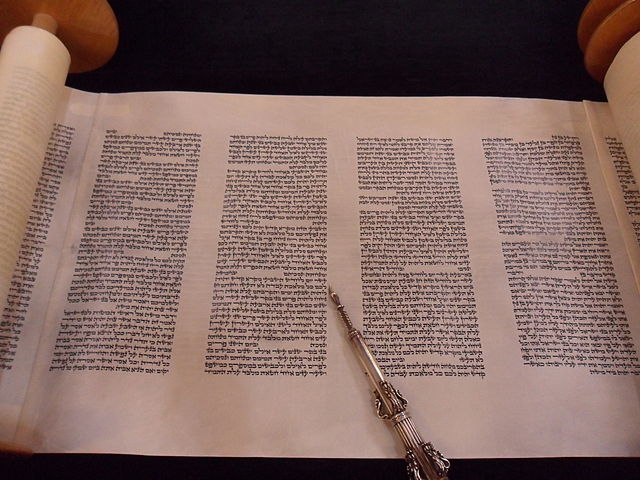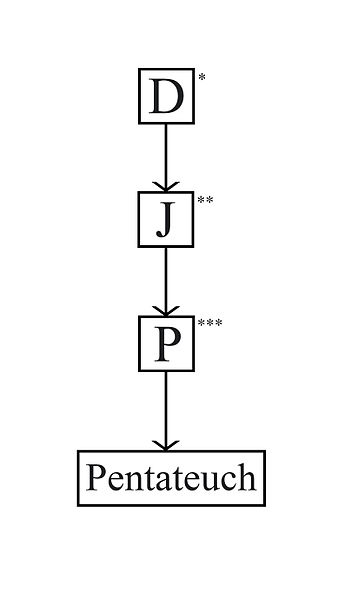Deuteronomy is the fifth book of the Torah, where it is called Devarim and the fifth book of the Hebrew Bible and Christian Old Testament.
Papyrus Fouad 266, dating to c. 100 BCE, contains part of a Greek translation (Septuagint) of Deuteronomy.
Moses receiving the Law (top) and reading the Law to the Israelites (bottom)
Moses viewing the Promised Land, Deuteronomy 34:1–5 (James Tissot)
The Book of Deuteronomy, Debarim. Hebrew with translation into Judeo-Arabic, transcribed in Hebrew letters. From Livorno, 1894 CE. Moroccan Jewish Museum, Casablanca.
The Torah is the compilation of the first five books of the Hebrew Bible, namely the books of Genesis, Exodus, Leviticus, Numbers and Deuteronomy. The Torah is known as the Pentateuch or the Five Books of Moses by Christians. It is also known as the Written Torah in Rabbinical Jewish tradition. If meant for liturgic purposes, it takes the form of a Torah scroll. If in bound book form, it is called Chumash, and is usually printed with the rabbinic commentaries.
An opened Torah scroll (Book of Genesis part).
Reading pointers, or yad, to ensure more ordinal reading of the Torah.
An opened Torah scroll (Book of Numbers part), and a reading pointer (yad).
The supplementary hypothesis, one potential successor to the documentary hypothesis.








